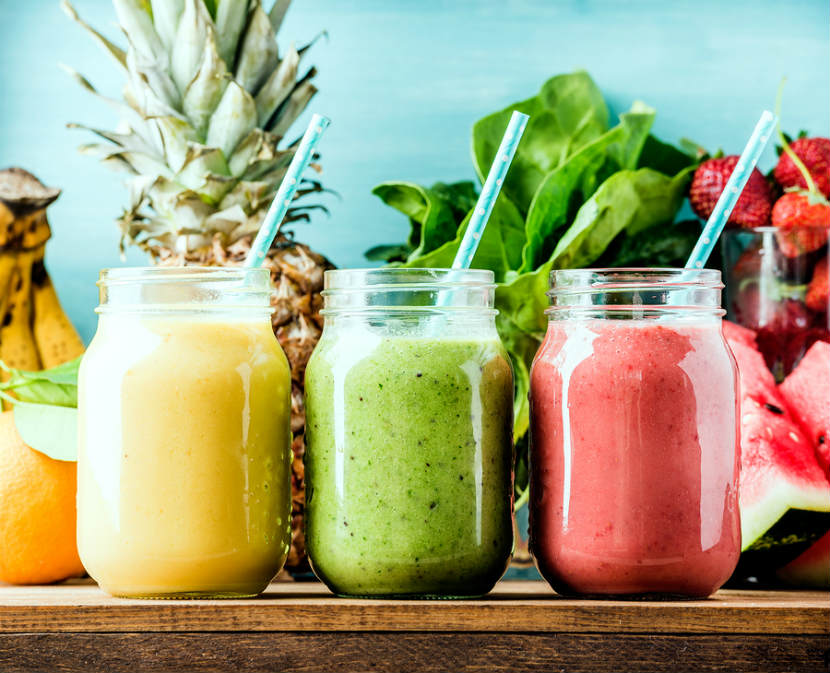Blended bananas have become a popular choice for health-conscious individuals who are always on the go. Blending bananas, or any fruit, is a quick and convenient way to obtain a nutritious drink that can serve as a meal or snack replacement. However, there have been discussions about whether blended bananas have more calories than their whole-fruit counterparts.
It is a common misconception that blending bananas or any other fruit will increase their caloric content. Nevertheless, incorporating a banana will not add any calories to the fruit. Combining a banana creates a smoother texture that is easier to drink or consume. Regardless of the form in which you consume the banana, the caloric content remains the same. You can read more in our article” Does Blending Fruit Increase Calories?”

One medium-sized banana contains approximately 105 calories. These calories come mainly from carbohydrates that are naturally present in the banana. Carbohydrates in the form of sugar provide most of the energy the human body requires. However, whole bananas also contain insoluble fiber that benefits digestive system health.
Blending bananas involves breaking down the cell walls of the fruit. This results in the banana’s texture becoming smoother and easier to drink. However, blending often destroys some of the banana’s insoluble fiber. Insoluble fiber is essential for maintaining good digestive health because it adds bulk to your stool, easing bowel movements. When broken down by blending, the insoluble fiber found in a banana may not provide the same benefit.
Do Blended Bananas Have More Calories?
No, blended bananas do not have more calories because blending has no detectable energetic benefits for food. Therefore, mixed bananas and whole bananas have the same amount of calories. However, blended bananas are not nutritionally equivalent to the fruit you left whole because blending can break down insoluble fiber and change nutrition value.
Scientific research articles show that cooking increases networking gain from lipid-rich food; blending has no detectable energetic benefits for food while cooking can improve it.
As proof, several scientists justify that blended bananas do not have more calories than a whole banana:
- “Effect of food structure on energy utilization: comparison of whole, blended, and juiced apples.” by Birketvedt et al. (2000). This study found that blending apples did not increase their calorie content, as measured by the amount of energy that was available to the body after consumption.
- “The effect of food form on satiety: a comparison of solid foods and liquids.” by Rolls et al. (1989). This study found that solid foods, such as whole bananas, were more satiating than liquid foods, such as blended bananas, suggesting that blended bananas are less likely to contribute to overeating.
- “Determination of energy content of some common fruits and vegetables using bomb calorimetry and prediction models.” by Rahman et al. (2018). This study found that the calorie content of bananas did not change when blended, confirming that blending has no detectable energetic benefits for food.
- “The effect of food form on satiety and energy intake.” by Rolls et al. (1986). This study found that consuming blended fruit drinks did not significantly increase energy intake, suggesting that blending bananas does not increase their calorie content.
- “Effect of juice extraction on the anthocyanin and polyphenol content of black currant and elderberry fruits.” by Viuda-Martos et al. (2009). This study found that blending and juicing fruits did not affect their polyphenol content, further supporting the idea that blending bananas does not increase their calorie content.
Furthermore, blending bananas can also result in other nutritional losses. For example, some of the vitamins and minerals in the banana might be lost while blending. The heat generated during the blending process often destroys some of these nutrients. For example, vitamin C in bananas is heat-sensitive, and blending may result in significant losses of this essential vitamin.
It is important to note that although blending bananas may not increase their caloric content, it can destroy some of the banana’s essential nutrients. Therefore, a balanced and nutritious diet that involves a combination of whole and blended fruits is necessary.
Conclusion
Blending bananas does not lead to an increase in caloric content. As a result, mixed bananas and whole bananas have the same caloric content. However, it is vital to consume whole fruits to benefit from their essential nutrients, including vitamins, minerals, and fiber. Blending bananas may destroy critical nutrients, including insoluble fiber and heat-sensitive vitamins, resulting in a potentially less nutritious drink. Therefore, individuals wishing a healthy and balanced diet should consume whole fruits and fruits.
- How Many Tablespoons is One Clove of Garlic? - June 26, 2024
- How to Measure 3/4 Cup When You Don’t Have the Right Measuring Cup? - June 6, 2024
- How Much Does Cooked Pasta Weight Compare To Dry? - April 30, 2024
